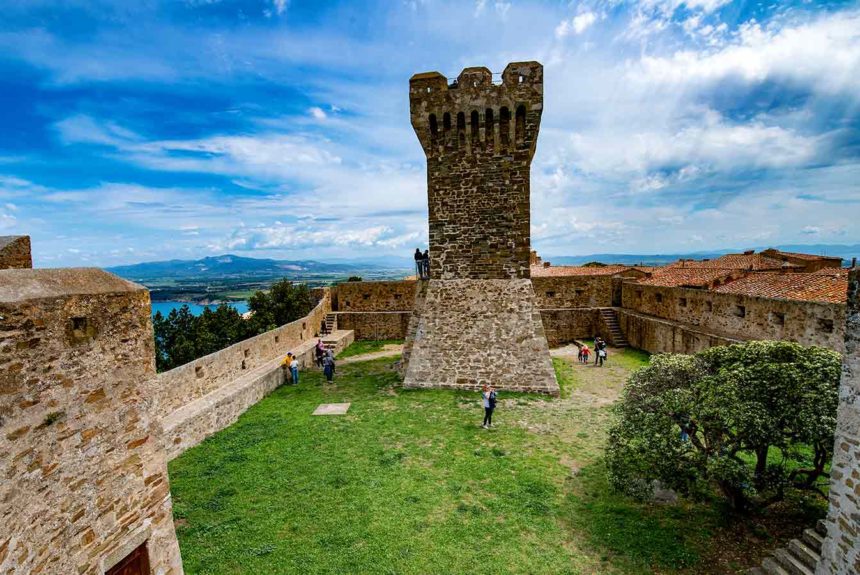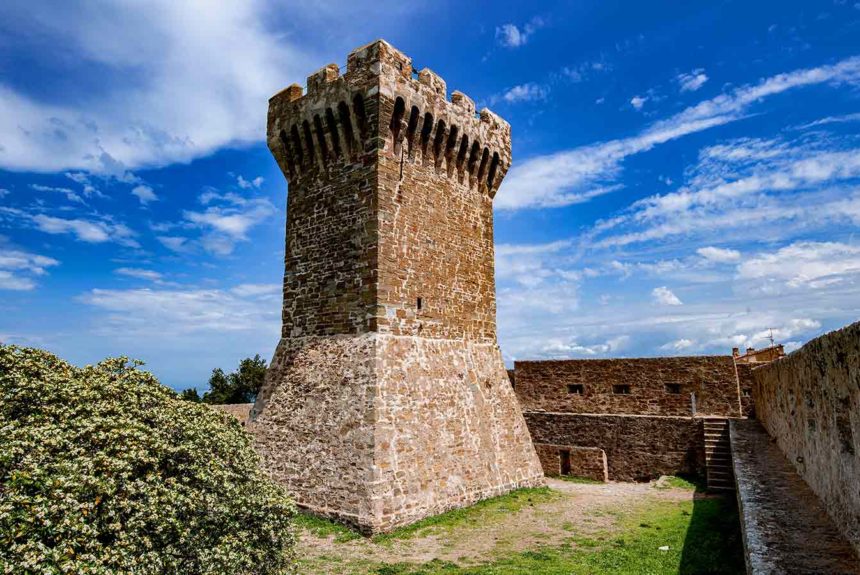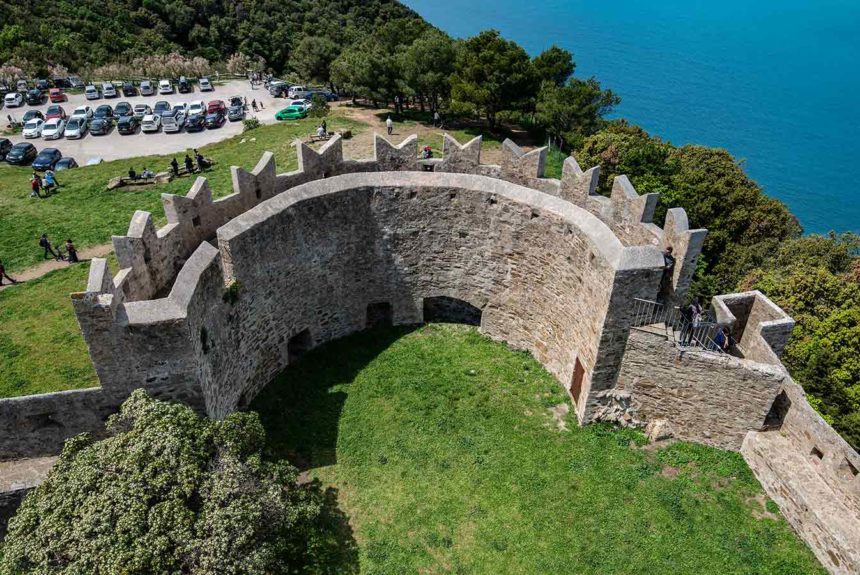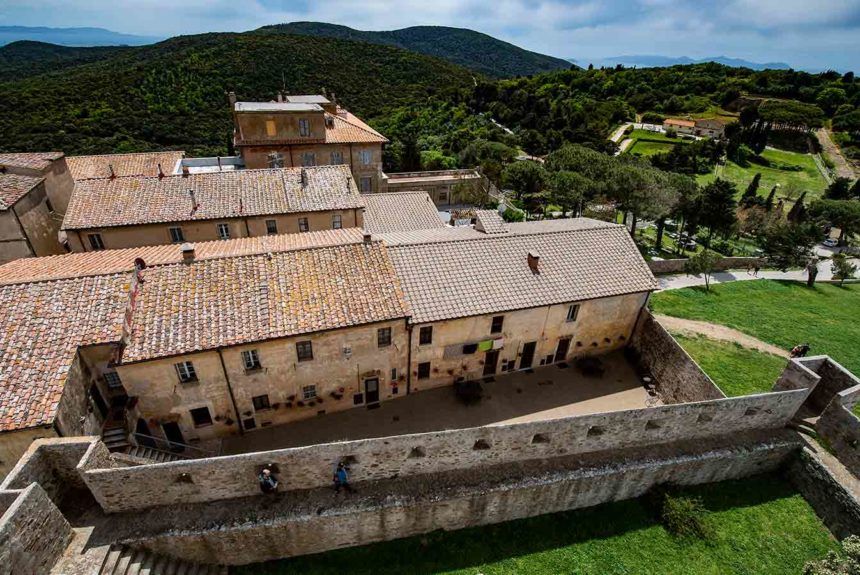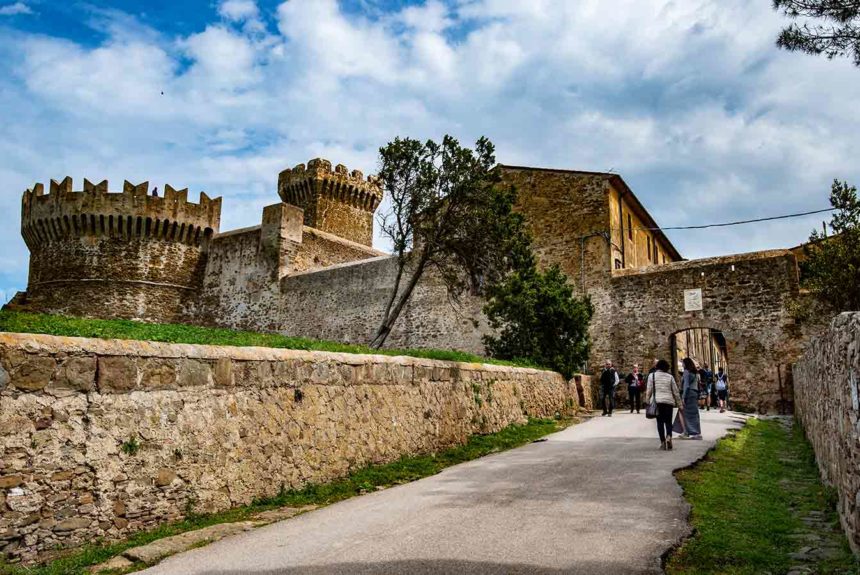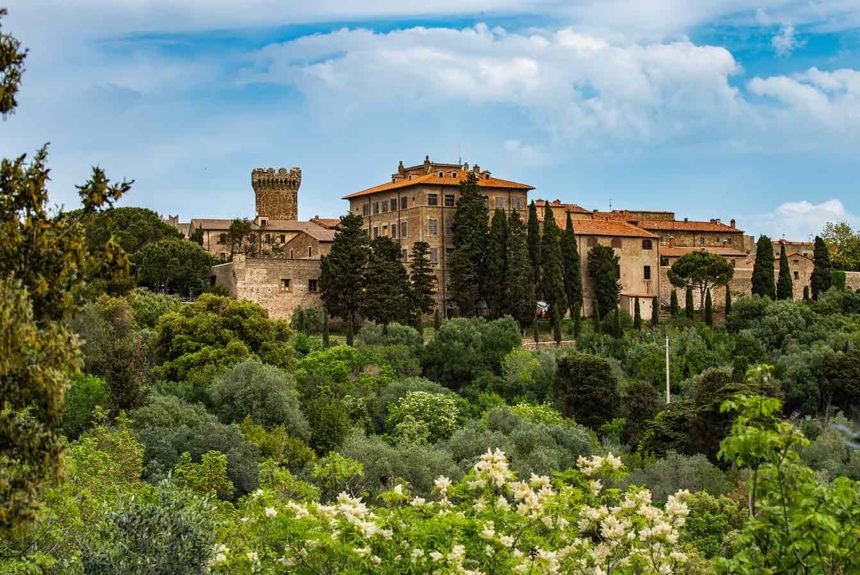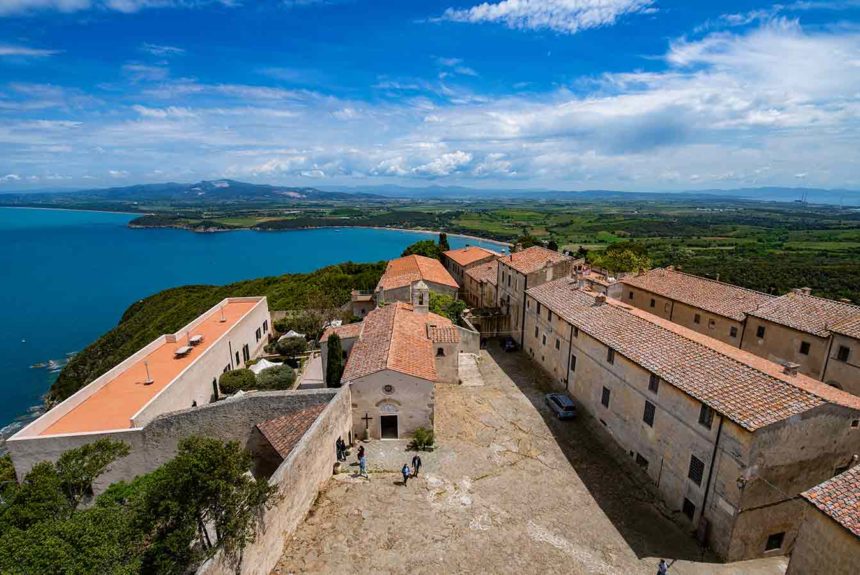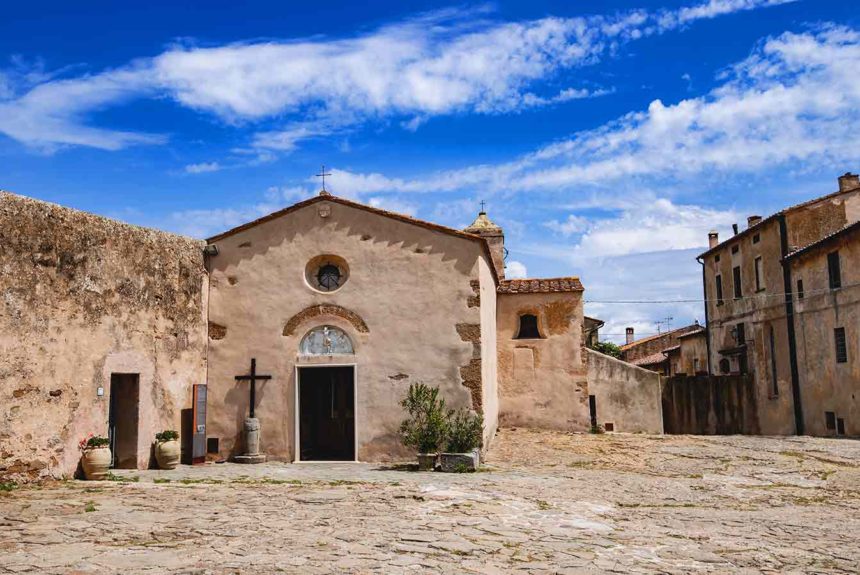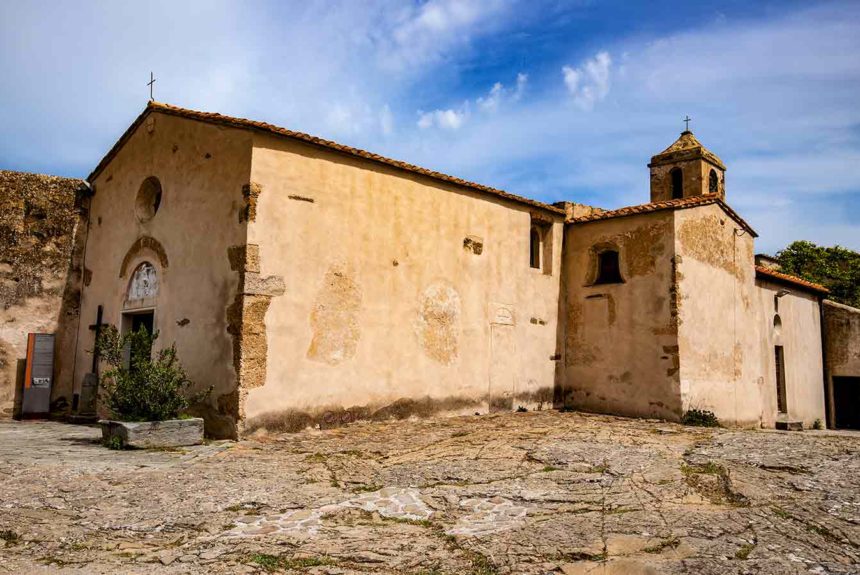Le cose da non perdere del Castello di Populonia. Torre medievale e Rocca degli Appiani
Praesent varius molestie odio, in vestibulum urna tincidunt et. Sed volutpat est eget interdum consequat. Vivamus sed ligula diam. Nam aliquam nulla in pretium maximus. Vestibulum facilisis rhoncus tincidunt. Nunc eu imperdiet libero. Praesent pretium diam at magna pharetra, maximus maximus magna bibendum.
Le cose da non perdere 1
La Torre di Populonia e il suo panorama mozzafiato
The tower of Populonia, also called the Torre dell’Assunta, was built in the course of the 12th century by Pisa. For centuries, it served a fundamental role in the maritime and terrestrial defensive system. Even during the 20th century, between 1927 and 1943, it served as the location of a aero-naval lookout position for the Royal Navy.
From the tower, visitors can admire a breathtaking panorama encompassing the entire promontory of Piombino, the islands of the Tuscan Archipelago, Elba, Capraia, and Gorgona, all the way to the coasts of Corsica, the splendid Gulf of Baratti framed by the “Metalbearing Hills” around Campiglia, and, proceeding to the north, the Apuan Alps of Versilia.
Una torre immersa nella storia della Toscana
In the medieval period, the tower of Populonia was in direct visual contact with the tower of San Leonardo, the “Torraccia,” the tower of San Vincenzo and the Fortress of Campiglia Marittima toward the north. Toward the south, it was in sight of the “torre del Sale,” perhaps along with the towers of the Island of Palmaiola and with the nearby monastery of San Quirico, equipped with a bell tower that also served lookout and communication functions.
Starting with the 16th century, the defensive system was perfected with the completion of the Via dei Cavalleggeri, a security force, instituted by the Grand Duke Cosimo I de’ Medici, with the task of patrolling the coast and carrying out health and customs surveillance. The light-armed cavalry ran surveillance between the 60 armed locations (towers and forts) present along the route between Livorno and Piombino. In this area, the Via Dei Cavalleggeri passed through Poggio Grosso and Monte Massoncello before arriving at Piombino in the area of Salivoli.
Le cose da non perdere 2
The fortified center was built at the beginning of the 15th century following the wishes of the Appiani, lords of Piombino, as a defensive bulwark along the northern border of the nascent State of Piombino. The Appiani family’s coat of arms, featuring a winged dragon, a knightly helm and symbolical ribbons, is situated above the gate providing access to the site and attributed to the Florentine sculptor Andrea Guardi (ca. 1405 – 1476).
In order to provide an incentive for the population to move to Populonia, the Appians endowed the settlement with a defensive wall. The result was the transformation of Populonia into a bona fide castle, representing a phenomenon that was very common in the late Middle Ages.
The modern appearance of Populonia resembles the typical urban plan for new foundations of the period, called terre nuove (new lands), with an orthogonal street grid delimiting building blocks of similar dimensions positioned in regular intervals.
The reign of the Appiani (1399-1628) was followed by the Principality of the Ludovisi (1634-1702) and of the Boncompagni Ludovisi (until 1801), then by the Principality of Elisa Bonaparte Baciocchi (1803-1814), sister of Napoleon, until the settlement was finally annexed by the Grand Duchy of Tuscany as a result of the Congress of Vienna.
Le cose da non perdere 3
In the 16th century, the landholding estate of Populonia became property of the Desideri family from Piombino. Count Giovanni Desideri (1800-1879), an expert in agrarian science and enthusiast of antiquity, introduced the cultivation of corn. He also financed the first archaeological excavations at Populonia, led by the Florentine archaeologist Alessandro François.
Following the ancient Etruscan city’s rediscovery, several famous intellectuals and travelers visited the castle, including Francesco Inghirami, George Dennis, and Heinrich Schliemann, excavator of the city of Troy.
After the death of Count Giovanni, the estate passed to his son and, later, to his son’s heirs, who divided their holdings and sold them. After a brief period in which the castle belonged to the lawyers Francesco Mussio and Mario Ciani, in 1936 the estate was purchased by Tommaso and Giulia Gasparri, who laid the groundwork for the Etruscan Museum of Populonia, the first museum institution in the region.
Today, the castle belongs to the nephews of Giulia and Tommaso, who dedicate themselves to the administration of the property which, by its nature, serves as collective cultural patrimony.
Le cose da non perdere 4
The Church of Santa Croce is situated in the principal piazza of the castle. A small church with a Roman plan, it was probably constructed between the 12th and 13th centuries. Its original plan was eventually embellished with the lateral chapels, the sacristy and the bell tower. The structure underwent numerous restorations, the last of which revealed portions of a fresco depicting figures of saints, as well as a marble sarcophagus dating back to the 3rd century CE, reused as an altar.
Today, the castle of Populonia offers visitors a unique visual and historical panorama. It is a monument which is open to the public, hosting not only cultural events and shows, but also educational activities and experiential laboratories.
Rimani aggiornato
Iscriviti
Ricevi aggiornamenti via e-mail sulle nostre mostre, eventi e molto altro:

